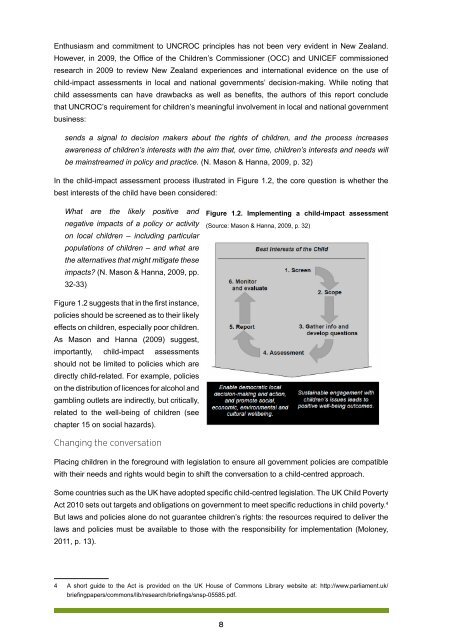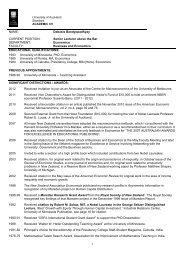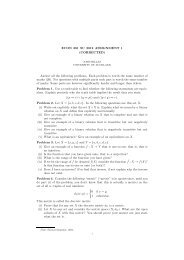Left Further Behind - Child Poverty Action Group
Left Further Behind - Child Poverty Action Group
Left Further Behind - Child Poverty Action Group
Create successful ePaper yourself
Turn your PDF publications into a flip-book with our unique Google optimized e-Paper software.
Enthusiasm and commitment to UNCROC principles has not been very evident in New Zealand.<br />
However, in 2009, the Office of the <strong>Child</strong>ren’s Commissioner (OCC) and UNICEF commissioned<br />
research in 2009 to review New Zealand experiences and international evidence on the use of<br />
child-impact assessments in local and national governments’ decision-making. While noting that<br />
child assessments can have drawbacks as well as benefits, the authors of this report conclude<br />
that UNCROC’s requirement for children’s meaningful involvement in local and national government<br />
business:<br />
sends a signal to decision makers about the rights of children, and the process increases<br />
awareness of children’s interests with the aim that, over time, children’s interests and needs will<br />
be mainstreamed in policy and practice. (N. Mason & Hanna, 2009, p. 32)<br />
In the child-impact assessment process illustrated in Figure 1.2, the core question is whether the<br />
best interests of the child have been considered:<br />
What are the likely positive and<br />
negative impacts of a policy or activity<br />
on local children – including particular<br />
populations of children – and what are<br />
the alternatives that might mitigate these<br />
impacts? (N. Mason & Hanna, 2009, pp.<br />
32-33)<br />
Figure 1.2. Implementing a child-impact assessment<br />
(Source: Mason & Hanna, 2009, p. 32)<br />
Figure 1.2 suggests that in the first instance,<br />
policies should be screened as to their likely<br />
effects on children, especially poor children.<br />
As Mason and Hanna (2009) suggest,<br />
importantly, child-impact assessments<br />
should not be limited to policies which are<br />
directly child-related. For example, policies<br />
on the distribution of licences for alcohol and<br />
gambling outlets are indirectly, but critically,<br />
related to the well-being of children (see<br />
chapter 15 on social hazards).<br />
Changing the conversation<br />
Placing children in the foreground with legislation to ensure all government policies are compatible<br />
with their needs and rights would begin to shift the conversation to a child-centred approach.<br />
Some countries such as the UK have adopted specific child-centred legislation. The UK <strong>Child</strong> <strong>Poverty</strong><br />
Act 2010 sets out targets and obligations on government to meet specific reductions in child poverty. 4<br />
But laws and policies alone do not guarantee children’s rights: the resources required to deliver the<br />
laws and policies must be available to those with the responsibility for implementation (Moloney,<br />
2011, p. 13).<br />
4 A short guide to the Act is provided on the UK House of Commons Library website at: http://www.parliament.uk/<br />
briefingpapers/commons/lib/research/briefings/snsp-05585.pdf.<br />
8









